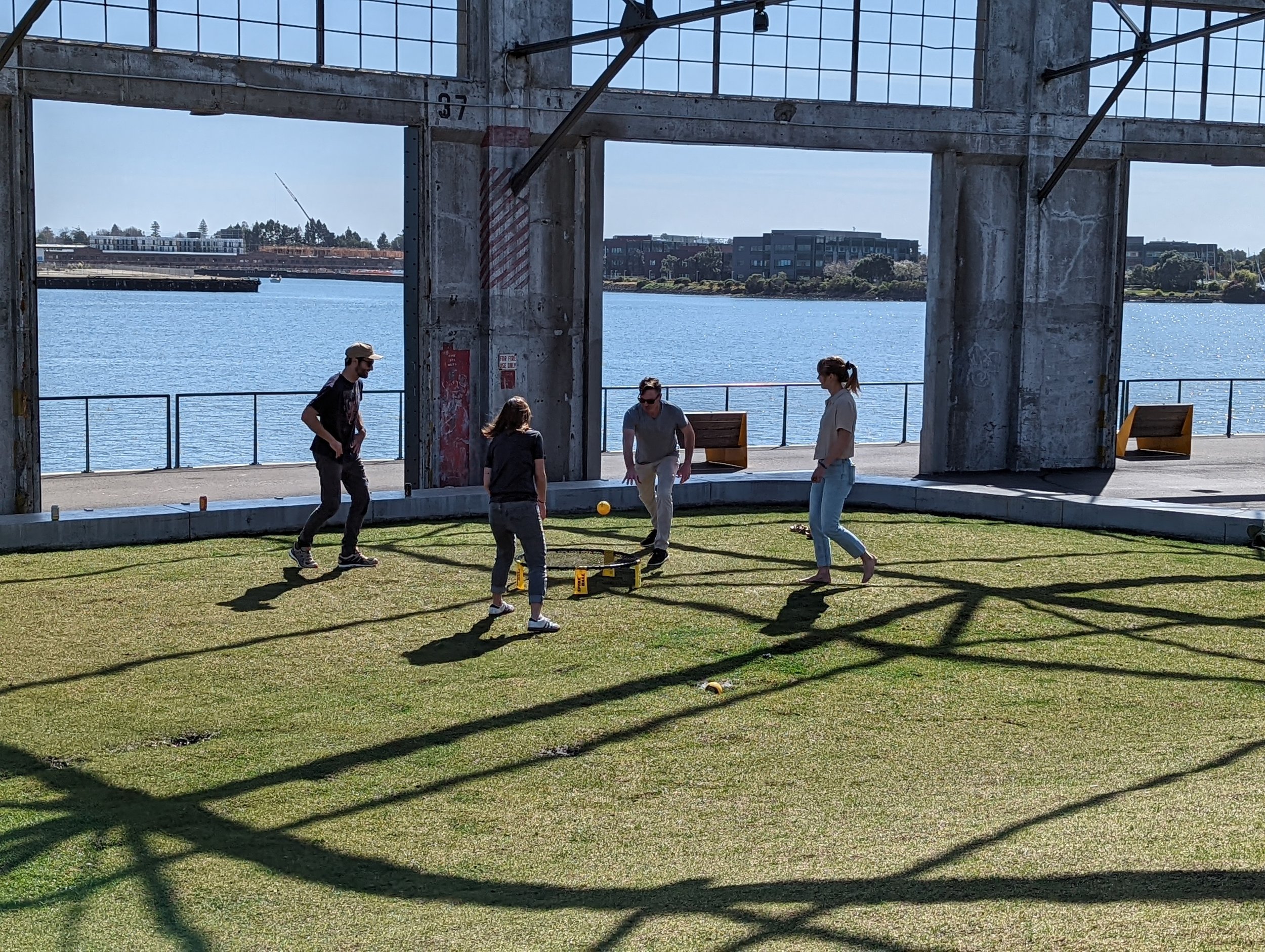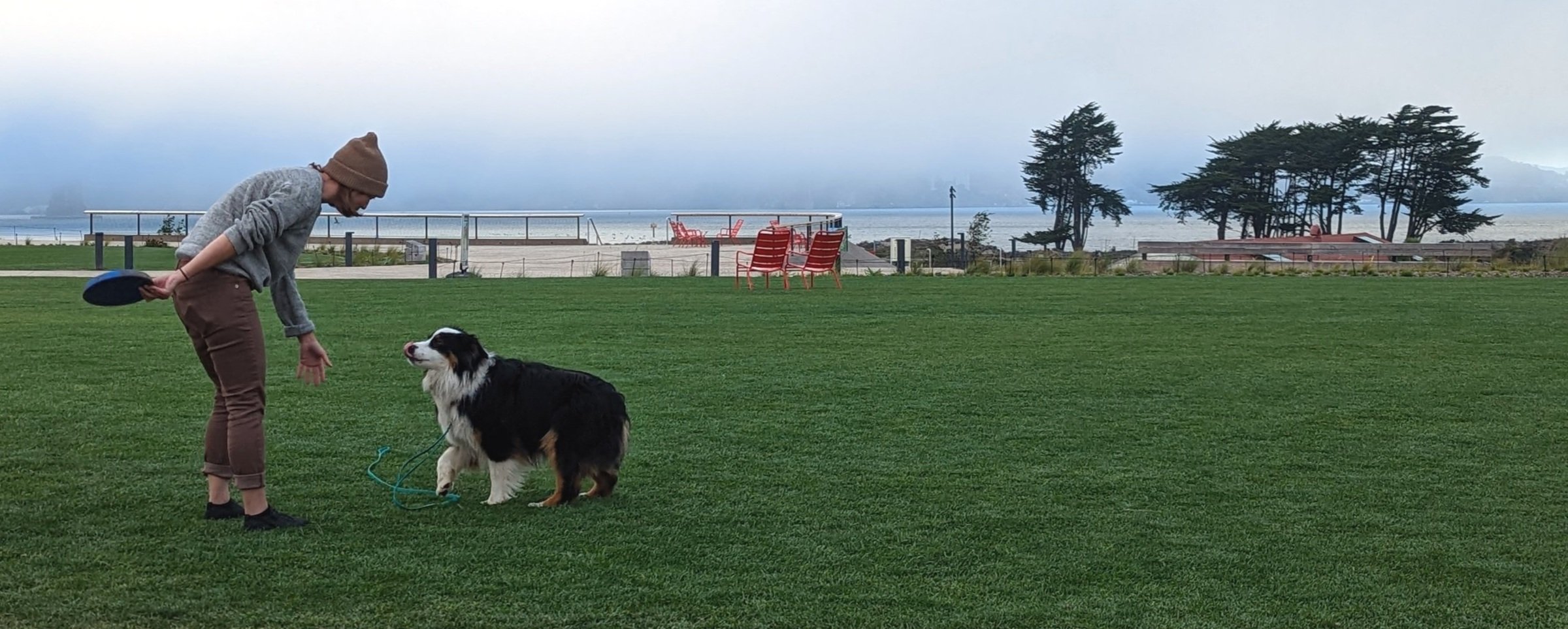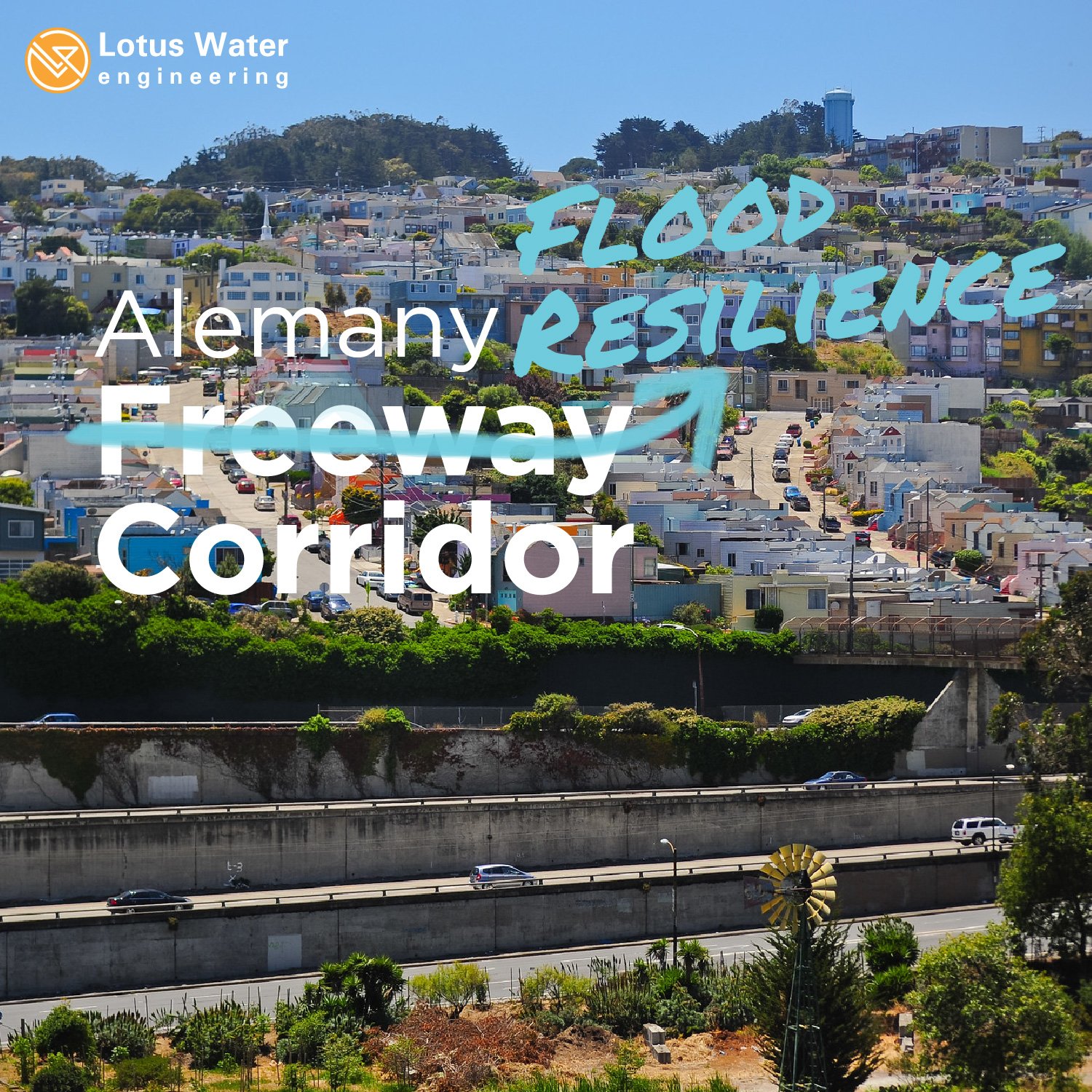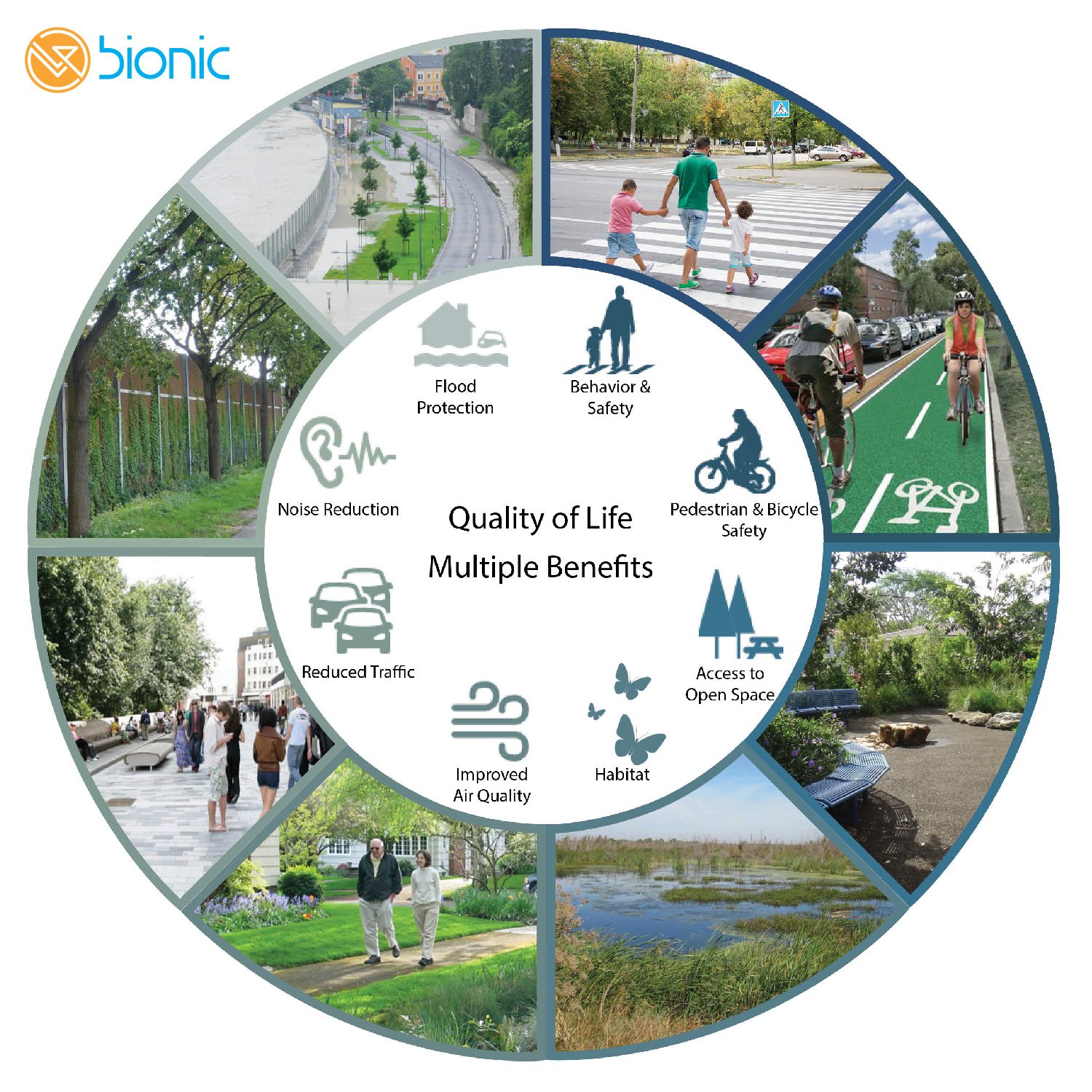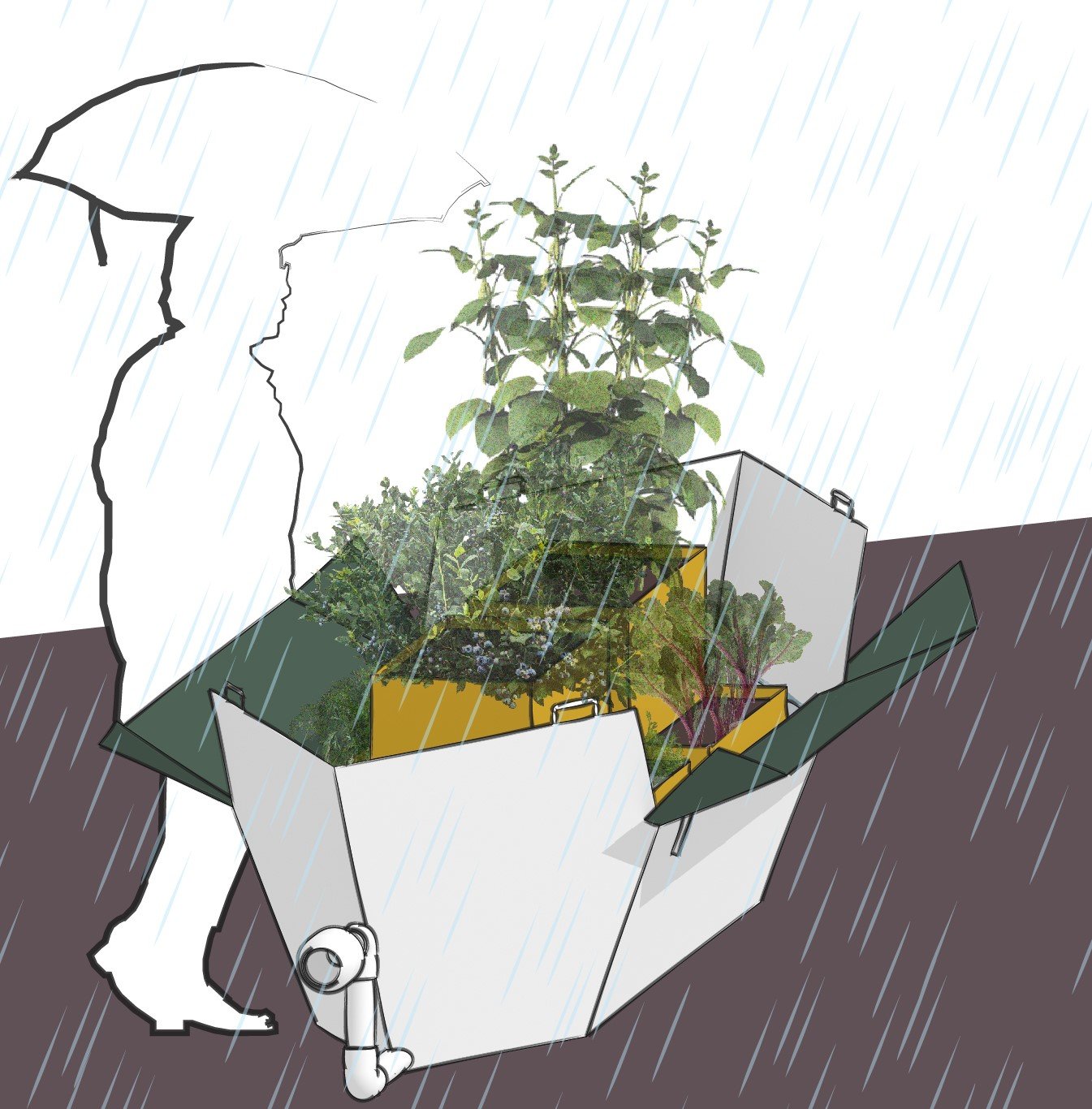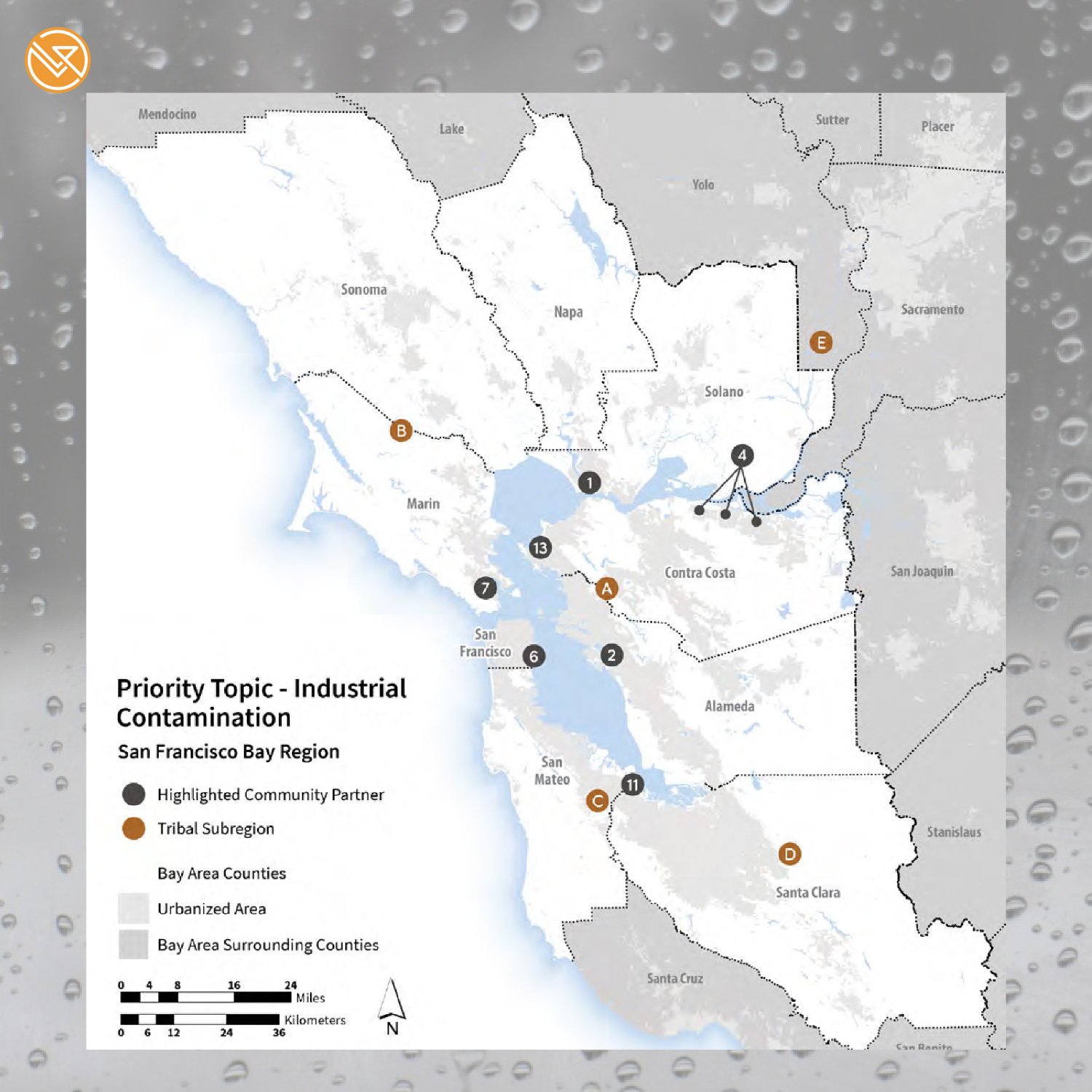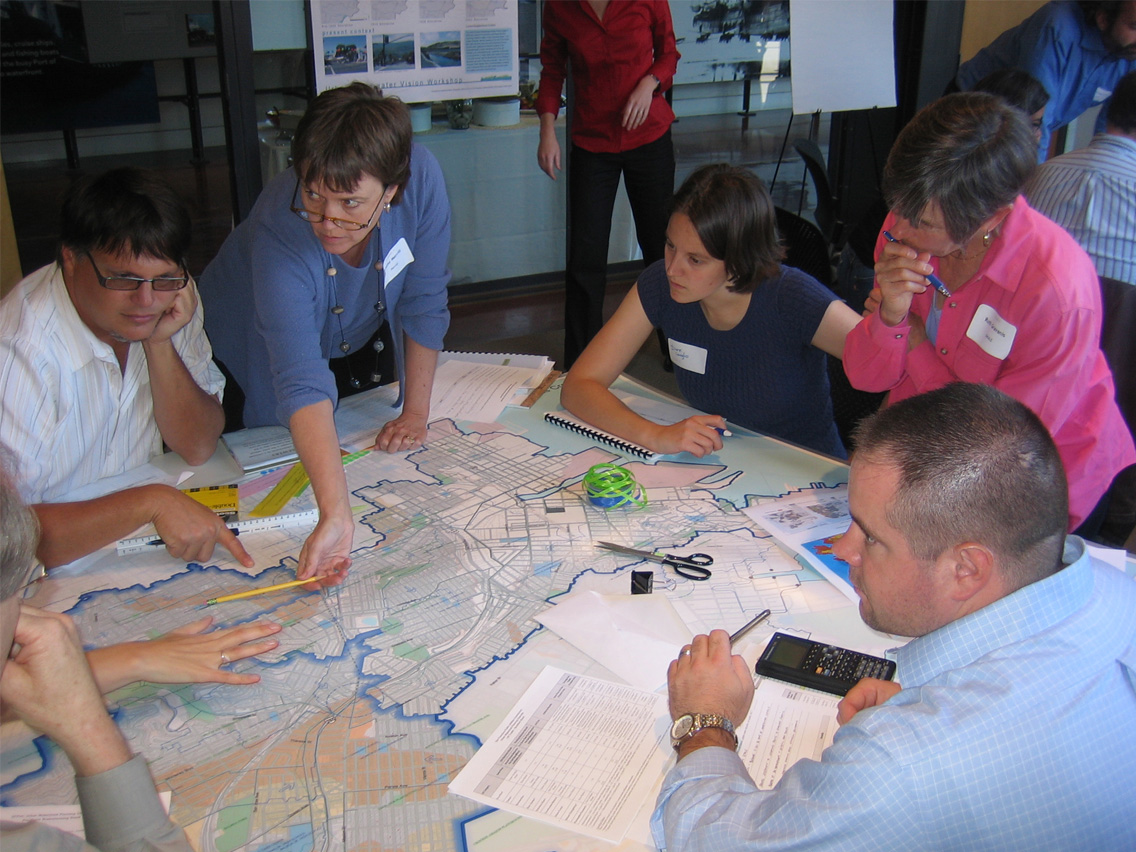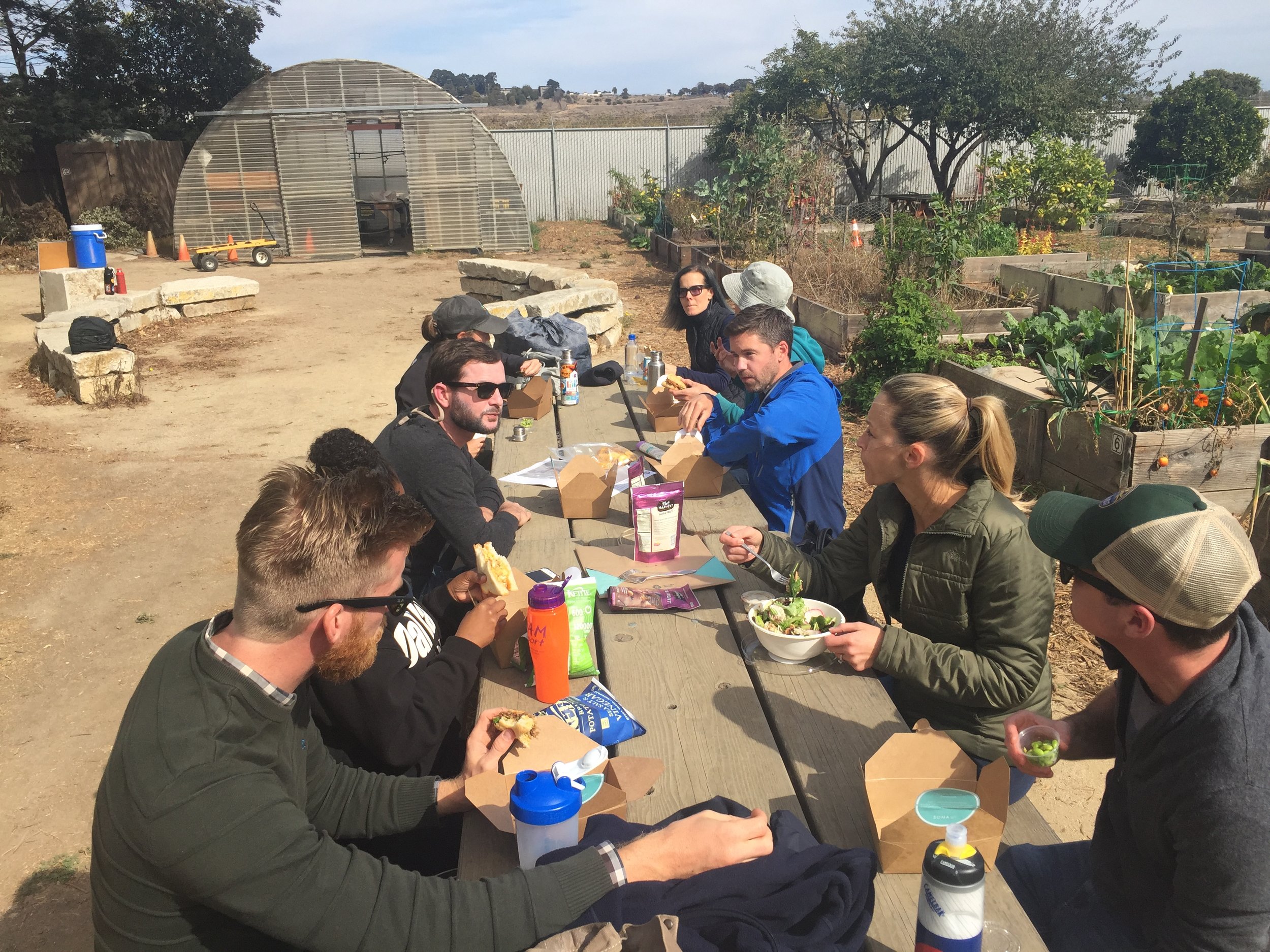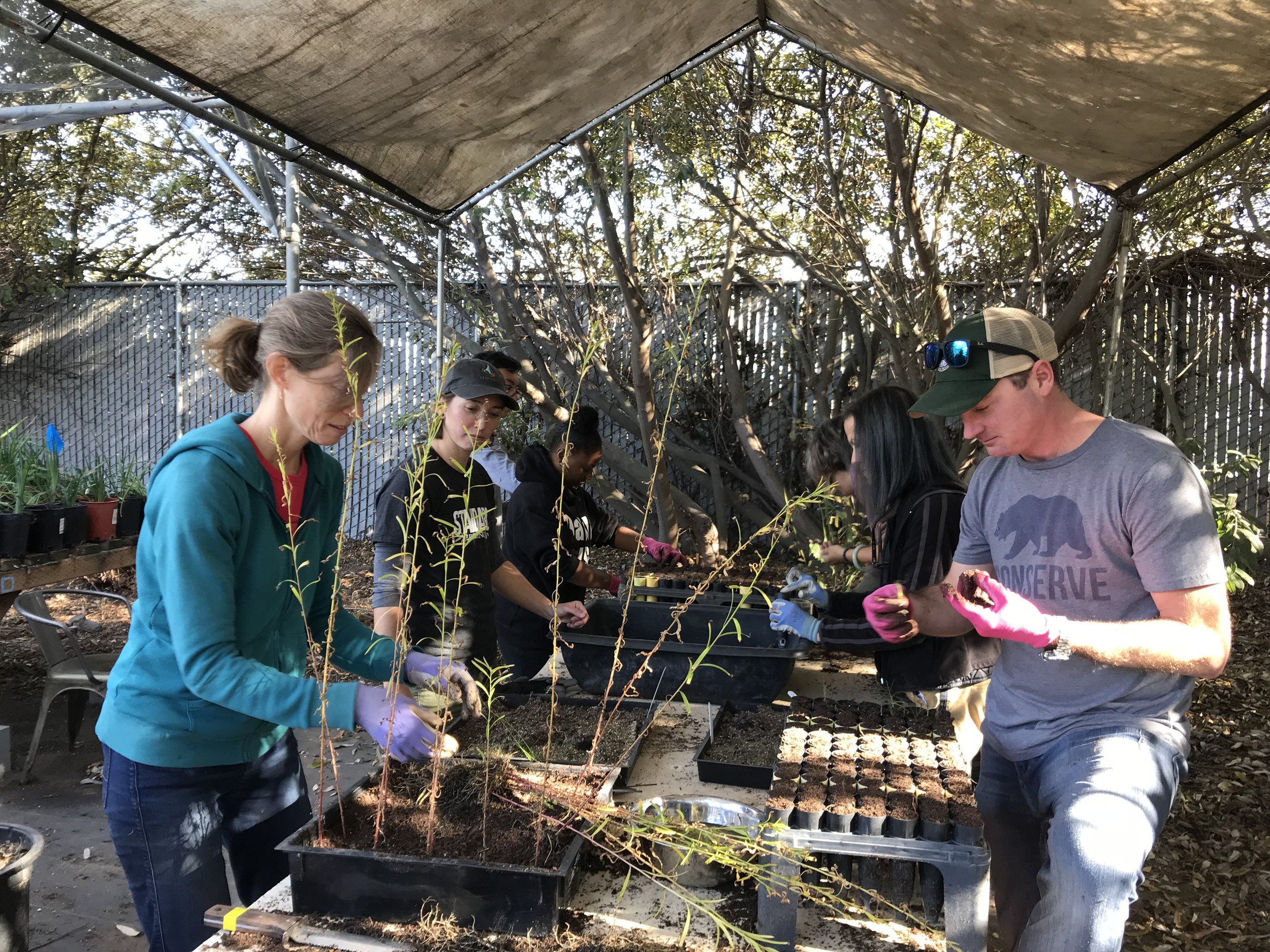Always up for taking advantage of gorgeous weather in the Bay and opportunities to break up the routine of WFH, Zoom calls, GIS, or H&H modelling, the Lotus team still finds time to get together for outdoor fun, food, laughs…and a rare chance to see each other IRL!
Spring Fling // Oakland Waterfront
Our spring event was the perfect opportunity to check out Brooklyn Basin and Township Commons, a beautiful public park plaza on the Oakland waterfront, whose design by Einwiller Kuehl integrates community priorities, sea level rise adaptation, and sustainable stormwater features with the area’s rich shipping history.
After an amazing lunch at Brotzeit Lokal biergarten (Oktoberfest in May, because why not?), we strolled (and kayaked!) along the water to Township Commons for music, suprisingly competitive games of Spikeball and Throw Throw Burrito, and just kicking it. Throughout the afternoon, we observed how thoughtful public spaces like the Brooklyn Basin can recall its historic past in design elements echoing the spacing of the former loading docks. We also saw how spaces can adapt to a post-Covid world; the large, open spaces at the Basin easily allowed for social distancing, while its waterfront location lends itself to be a destination for all kinds of recreation and activities. It was wonderful to see the park full of people roller skating, running, playing with their dogs, and to be reminded how important shared open spaces are to creating connection and community.
Fall Picnic // Presidio of San Francisco
Once again inspired by innovative design and a new waterfront park, the Lotus team gathered for an afternoon picnic at San Francisco’s new Presidio Tunnel Tops Park in early October. Over frosty drinks, a spread from Souvla and Gregory’s Underground Bakery, and frisbee with furry friends, the team enjoyed a chilly but beautiful sunset while exploring the 14-acre park overlooking Crissy Field and the Golden Gate Bridge.
Despite the wind and a strong appearance by Karl the Fog, we toured the grounds to appreciate various design elements included by the James Corner Field Operations team. Partitioned spaces of lawns, meadows, outlooks, and outposts throughout the park allow for varied programming and a plethora of gatherings to take place simultaneously. Imaginative nature-inspired seating areas made of tree trunks, reclaimed wood, and boulders are sprinkled throughout for visitors to take a load off and enjoy the views. The design also incorporates bioretention areas to manage stormwater, infiltration galleries for groundwater recharge, and sea level rise and saltwater intrusion measures along the park’s lower outpost play area.
We had a blast together and look forward to exploring other new parks being built around the Bay, including India Basin Waterfront Park and Lotus’ own Mission Bay Bayfront Park!



